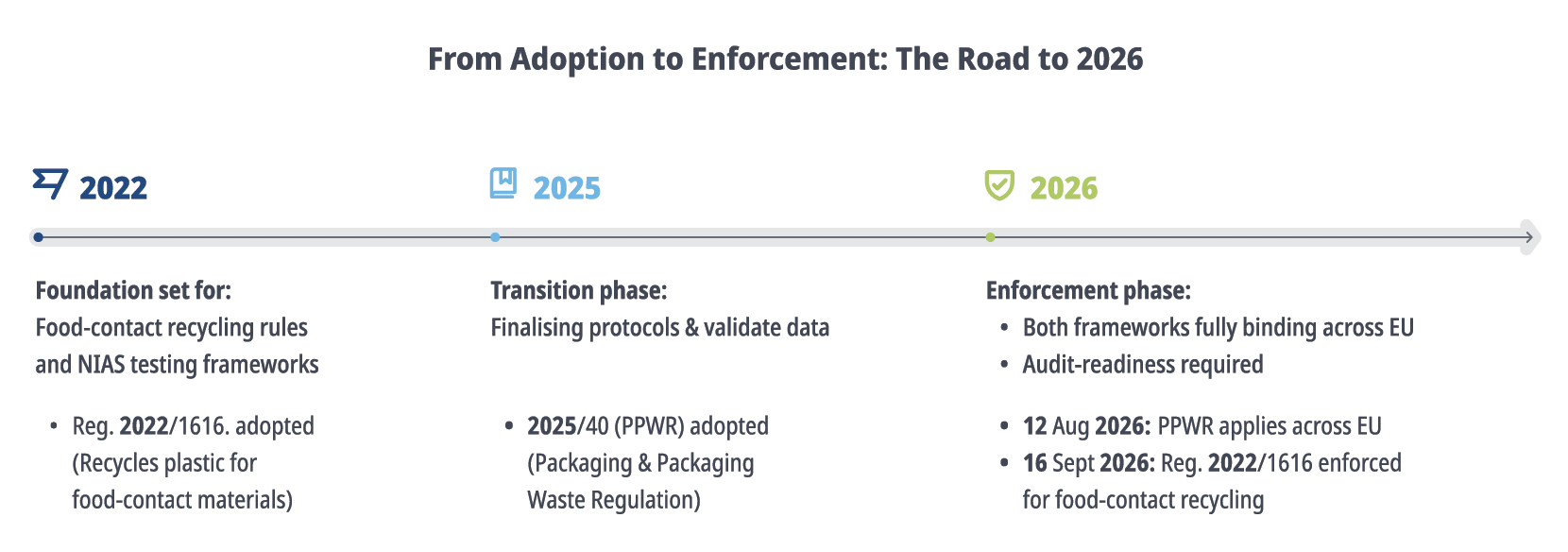Why 2026 Matters
Starting in August and September 2026, both regulations move from development to enforcement.
Their combined effect: producers, recyclers, and converters will need stronger control over testing data, sourcing, and documentation for recycled materials.

What These Changes Mean for Your Operations
Where Most Companies Are Struggling Today

How Leading Producers Are Preparing / How to prepare
Timeline
Both frameworks are already law. What changes in 2026 is enforcement, along with the expectation that every data point, test, and authorization can be verified instantly.

The transition window is closing fast. Those who use 2025 to validate and centralize their data will be the ones who meet 2026 with confidence.
Where You Can Start Now
KÖR Group helps producers and recyclers align testing, documentation, and traceability systems with the upcoming EU regulations.
The transition window is closing fast. Those who use 2025 to validate and centralize their data will be the ones who meet 2026 with confidence.
A short conversation is often enough to map your current position and pinpoint the fastest route to full readiness.
Prefer a concise, print-ready overview?